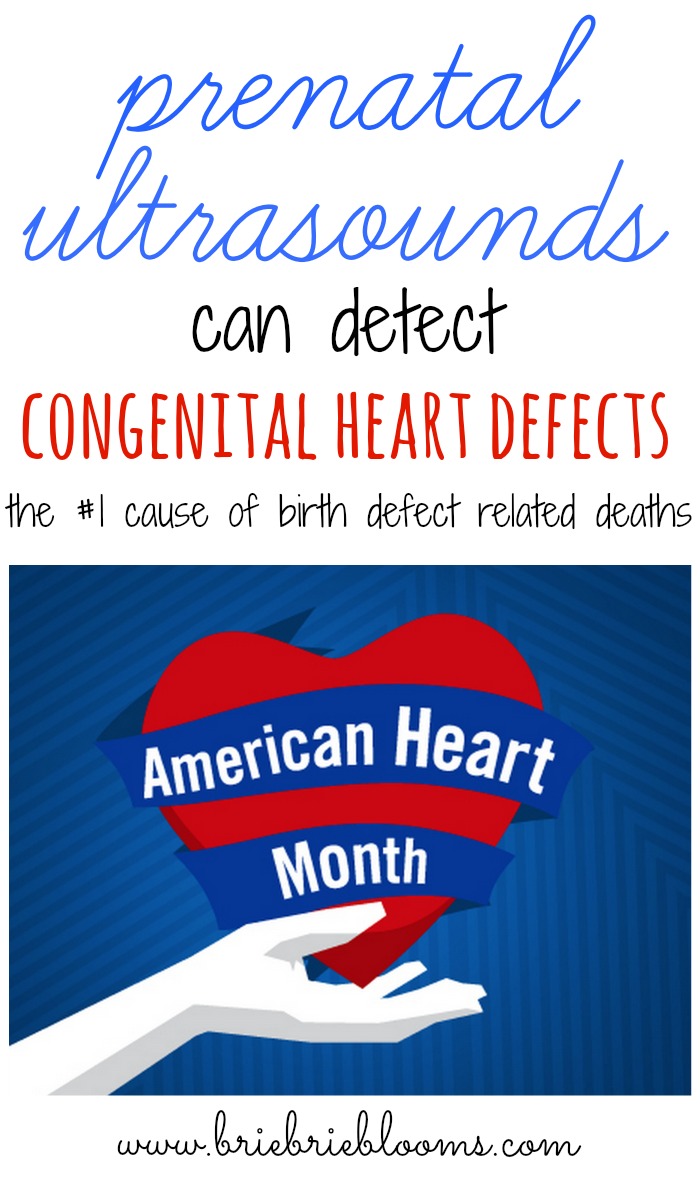I was recently asked, “what’s with all the ultrasounds? Is there something wrong your baby?” After giving it some thought and the question coinciding with February being American Heart Month, I’ll share why I had five ultrasounds while pregnant with my first daughter and have had almost that many to date during this pregnancy.
My husband and I both have congenital heart defects. His malformed aorta was diagnosed at infancy resulting in open heart surgery as a child. My atrial septal defect was diagnosed and repaired just after my 25th birthday. I never would have even seen a cardiologist if it wasn’t for my husband’s insistence. I grew up with vision impairing migraines and occasionally passed out beginning in my early childhood. My primary care physician in the small town where I grew up was also the doctor that delivered me, prescribed antibiotics, and casted my broken arm during fifth grade. The first time I passed out was in third grade during a school field trip. He told my parents I simply had locked my knees while standing. After passing out multiple times throughout my childhood and young adulthood including while I was a bridesmaid in my best friend’s wedding, I listened to my husband and saw a cardiologist. Just a week later my ASD was repaired and I have not had a migraine resulting in me passing out since.
With an increased risk from both my husband and myself, we felt very fortunate to use prenatal ultrasounds to potentially detect congenital heart defects. During this pregnancy we have been under the same type of monitoring of our baby’s heart development. Seeing a human heart develop in utero is amazing. Each ultrasound we have been able to compare the development and confirm healthy growth.
According to the Children’s Heart Foundation,
-
Congenital heart defects are America’s and every country’s #1 birth defect. Nearly one of every 100 babies is born with a CHD.
-
Congenital heart defects are the #1 cause of birth defect related deaths.
-
Congenital heart defects are the leading cause of all infant deaths in the United States.
-
Each year approximately 40,000 babies are born in the United States with a congenital heart defect. Thousands of them will not reach their first birthday and thousands more die before they reach adulthood.
-
Each year over 1,000,000 babies are born worldwide with a congenital heart defect. 100,000 of them will not live to see their first birthday and thousands more die before they reach adulthood.
-
More than 50% of all children born with congenital heart defect will require at least one invasive surgery in their lifetime.
-
There are more than 40 different types of congenital heart defects. Little is known about the cause of most of them. There is no known prevention or cure for any of them.
-
In the United States, twice as many children die from congenital heart defects each year than from all forms of childhood cancer combined, yet funding for pediatric cancer research is five times higher than funding for CHD.
While there is currently no known prevention or cure for any congenital heart defect, prenatal ultrasounds provide detection of cardiac anomalies. While some are worried about excessive use of ultrasounds, my husband and I feel very fortunate for modern science to put our family at ease recognizing our children’s healthy heart development during pregnancy.
So the answer to the original question, “What’s with all the ultrasounds?” is this: given our increased risk of birthing a child with a congenital heart defect, we are using modern science to help us provide the best medical environment necessary for a healthy delivery.
This friday, February 6, is national wear red day to help raise awareness of cardiovascular disease. I’ll be wearing red, will you?


Prenatal Ultrasounds can detect SOME CHD, it often misses many heart defects. (I had 3 ultrasounds and they missed my guys heart defect).